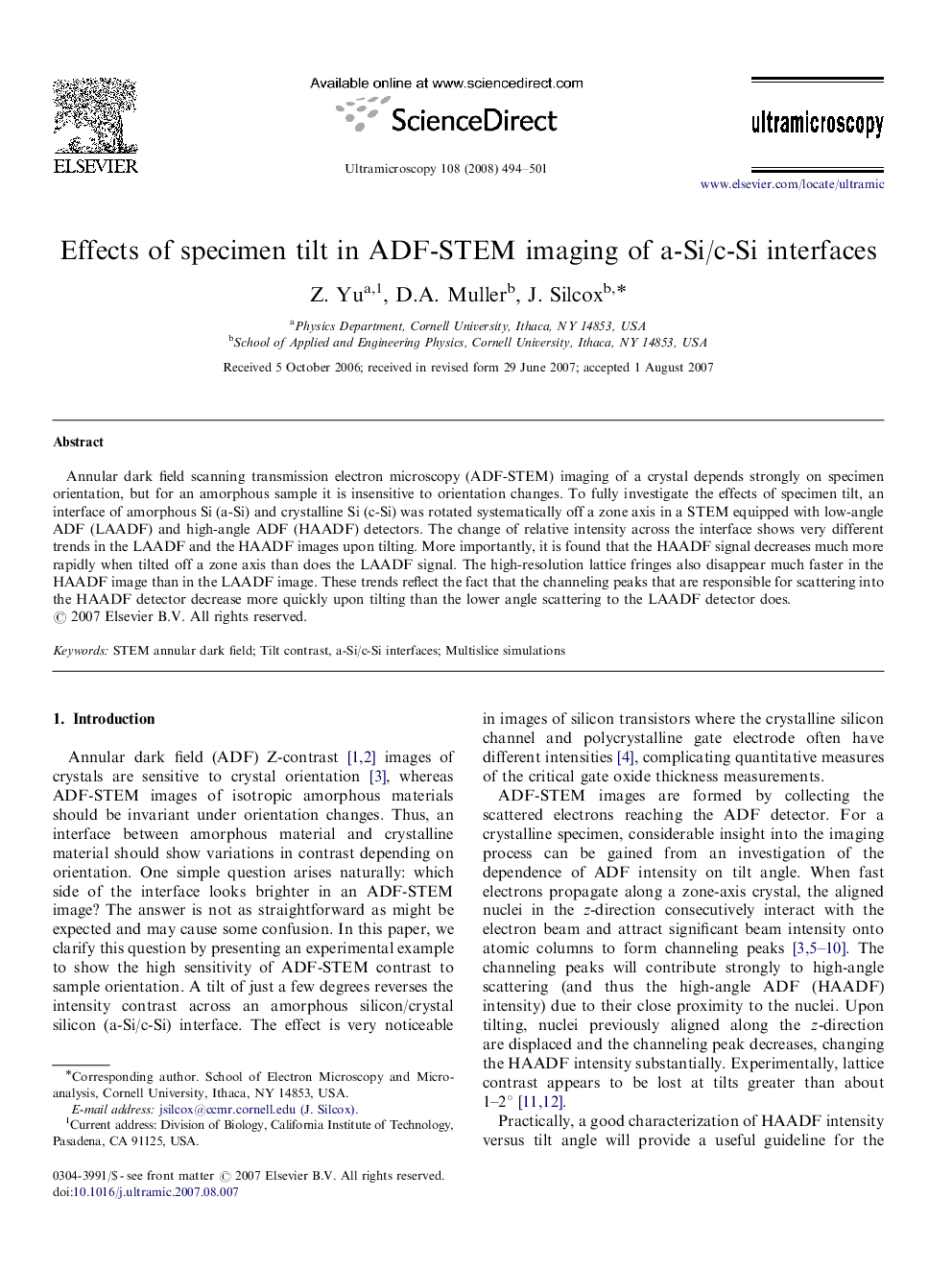| Article ID | Journal | Published Year | Pages | File Type |
|---|---|---|---|---|
| 1679076 | Ultramicroscopy | 2008 | 8 Pages |
Abstract
Annular dark field scanning transmission electron microscopy (ADF-STEM) imaging of a crystal depends strongly on specimen orientation, but for an amorphous sample it is insensitive to orientation changes. To fully investigate the effects of specimen tilt, an interface of amorphous Si (a-Si) and crystalline Si (c-Si) was rotated systematically off a zone axis in a STEM equipped with low-angle ADF (LAADF) and high-angle ADF (HAADF) detectors. The change of relative intensity across the interface shows very different trends in the LAADF and the HAADF images upon tilting. More importantly, it is found that the HAADF signal decreases much more rapidly when tilted off a zone axis than does the LAADF signal. The high-resolution lattice fringes also disappear much faster in the HAADF image than in the LAADF image. These trends reflect the fact that the channeling peaks that are responsible for scattering into the HAADF detector decrease more quickly upon tilting than the lower angle scattering to the LAADF detector does.
Keywords
Related Topics
Physical Sciences and Engineering
Materials Science
Nanotechnology
Authors
Z. Yu, D.A. Muller, J. Silcox,
